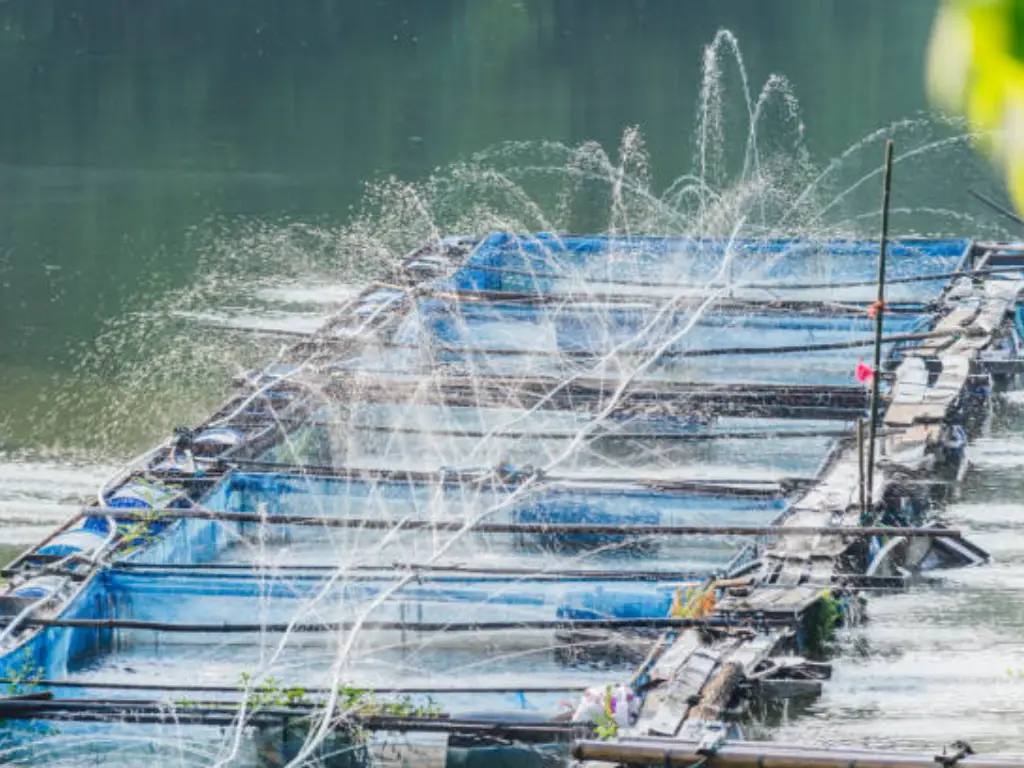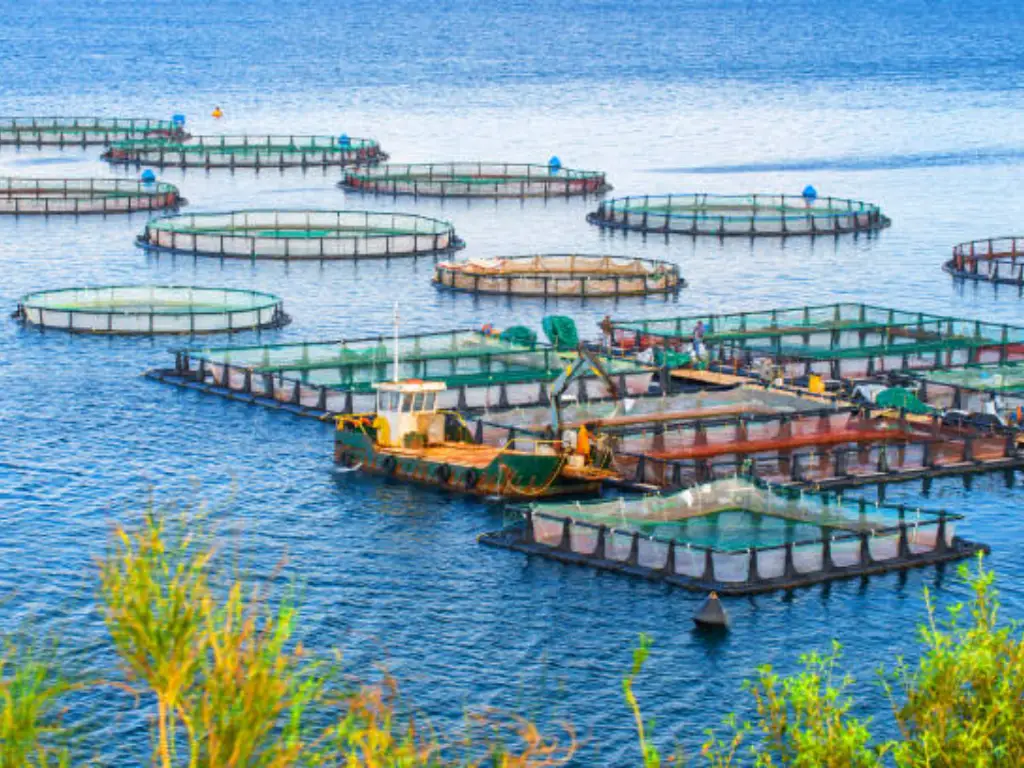Introducción
The world market demand for sustainable sources of protein is increasing at an unprecedented rate, making aquaculture one of the fastest-growing sectors in the agricultural industry. Last year, world production of farmed fish exceeded wild catch by around 94.4 million tonnes versus 91 million tonnes of capture fisheries, marking the first time in history that farmed fish output has topped wild catch (FT.com). The UN Food and Agriculture Organization estimated that the world aquaculture production will increase to 111 million tonnes by 2032 in order to feed the growing population with protein (FT.com).
Market opportunity is also very strong. The world fish farming industry was pegged at approximately USD 322.3 billion in 2024 and is expected to increase to USD 470.3 billion by 2033 at a compound annual growth rate (CAGR) of 4.25% (IMARC Group). This is indicative not only of the massive commercial potential of the sector, but also of the high consumer demand for high-quality, responsibly produced protein.
It is against this background that a properly designed fish farming business plan is more essential than ever before. This handbook is an all-inclusive road map to starting up a prosperous aquaculture business, including:
- Evaluation of the fit between the opportunities in the industry and your skills and resources,
- Strategy of planning your startup capital and operation,
- Development of farming systems and choice of the most appropriate fish species,
- Maintaining the best water quality and strong health management,
- Coming up with focused marketing, pricing strategies,
- And developing a map for sustainable growth and sustained success.
This article will provide you with the knowledge and tools to start and expand a profitable, sustainable fish farming enterprise by joining authoritative information with real-life experiences and systematic planning.
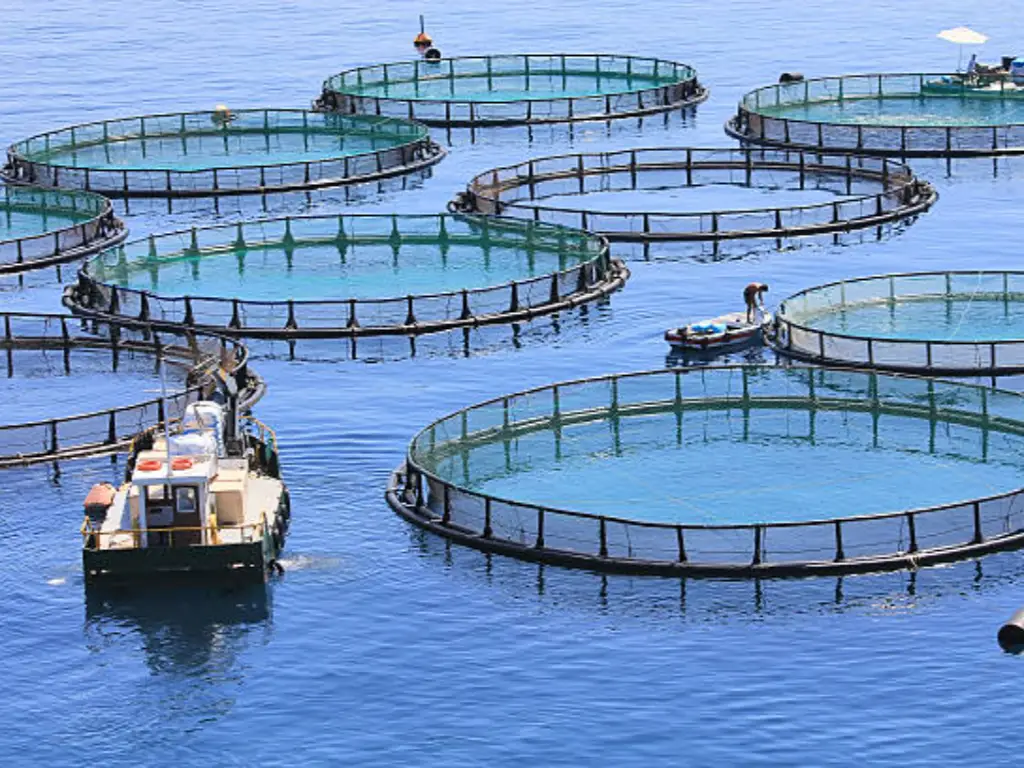
First, Is This Business Right For You?
The question of whether to go into the fish farming business is not a yes/no type of answer. It requires a realistic assessment of your ability, financial capability, and the readiness to invest the time and concentration required. Effective fish farmers are technical, business-savvy, and operationally disciplined, and these are acquired skills that have been honed in the process of training and practical experience.
Skills-wise, you will require familiarity with some of the main features of aquaculture, such as water quality management, feed optimization, and disease control. Although previous experience within the agricultural sector or similar industries can reduce the learning process, new entrants should be ready to research the best practices in the industry and be ready to apply them at all times. Fundamental skills of equipment maintenance, record-keeping, and troubleshooting biological or environmental problems are also necessary.
Another determinant is financial preparedness. Capital investment requirements are also vastly different based on the type of fish farming system you select to engage in, whether a relatively less expensive pond system or a Recirculating Aquaculture System (RAS), which is capital-intensive. Your budget should have infrastructure, seed stock, feed, labor, and operational costs like energy and water treatment. An example is that tilapia production in warm water areas can be economical, but salmon production in colder areas of the world, such as British Columbia, usually requires more initial investments and specialized farms.
The commitment of time is a factor that is not considered. A fish farm is not something you can set and forget; there is a need to monitor the health of the fish, water health, feeding, and environmental factors like temperature and oxygen levels every day. Losses can be critical even when the time is neglected.
To make this reality check formal, answer these seven critical questions about yourself:
- Do I possess (or am I willing to gain) knowledge of aquaculture, biology, and environmental management?
- Will I be able to invest capital to establish the selected farming system and maintain it until the first harvest?
- Would I be ready to work on day-to-day operations, such as weekends and holidays?
- Are there good sources of water and appropriate land/facilities?
- Do I feel comfortable leading a team, dealing with money, and working through required permits?
- Am I able to withstand the seasonal changes in production and market demand?
When you say yes to the majority of these questions and have a strategy as to how you will respond to any negative answers, you may have the basis to develop a viable, sustainable fish farming business. Otherwise, perhaps it would be worthwhile to spend some time training and collaborating or conducting smaller-scale experiments before fully investing.
Crafting Your Blueprint for Success
When you have made sure that fish farming is the right business to start, the next step is to come up with a comprehensive plan that will direct all the activities in your business. A good fish farming business plan must not only assist you in operating daily operations effectively but also facilitate easier funding and responding to market dynamics. A realistic and workable plan has the following four components.

Market Analysis
The first step in a good fish farming business plan is to know your market. Find out the most popular and best species of various fish through a visit to the market, price tracking, and discussions with buyers. Follow the interest in certain types of fish and seasonal demand on social media platforms. Know your competition- some areas prefer to farm catfish, others prefer to farm tilapia, or even niche farming such as eel farming. The ambition is to align your species of fish and harvest level with established local or export demand to minimize risk and increase the consistency of sales.
Operations
The plan for how you will produce consistently high-quality fish is provided in your operations plan. Depending on resources, site condition, soil quality, and availability of water sources, select your farming method: ponds, Recirculating Aquaculture Systems (RAS), or cages. Establish specific stocking density, feeding, and provision of clean water procedures to uphold the health of the fish. Discuss prevention of algae growth and control of diseases, and put in place a record system to monitor performance. It is essential to have operational discipline; any form of lapse can cost a lot of money in successful fish farming.
Management Team
Establish defined roles so that there is an easy flow of day-to-day activities. Divide up the job of feeding, water testing, sales, and equipment maintenance. Get access to an aquaculture technician or consultant to provide support in disease management, where possible. Select a legal form, i.e., a limited liability company, to secure personal assets and enhance credibility with buyers and lenders. A trustworthy team will make the farm capable of functioning successfully, without your presence, and is the major contributor to long-term stability.
Proyecciones financieras
It is crucial to prove viability through financial planning. Budget your start-up capitalization, infrastructure, equipment, seed stock, and labor. Compute expenses incurred in operation, like feed, energy, water treatment, and repair. Calculate the project revenue assuming realistic harvest levels and market prices of the species of fish you have selected. Have a profit reinvestment plan to expand fish farming in the long run. Proper projections can assist you in the management of your cash flow, financing, and financial health of your business as it expands.
Securing Your Startup Capital
The capital cost of a fish farming business differs largely depending on the size of the business, the fish farming system to be used, and the type of fish to be farmed. The initial costs can be small in the case of a small business with just a few fish tanks or small ponds. But in the case of commercial activity involving Recirculating Aquaculture Systems (RAS) or extensive pond systems, the cost can be high.
The business plan of a fish farming business must have a breakdown of costs that include infrastructure costs, equipment costs, seed stock costs, feed costs, labor costs, and contingency costs. Early recognition of the costs of operations is important in estimating the financing requirements and ability to repay. This involves recurrent costs like electricity, water treatment, and cleaning aeration systems to keep the water clean so as to keep the fish healthy.
Breakdown of Estimated Startup Costs:
| Categoría | Detalles | Estimated Costs |
| Land/Site Lease | Cost varies based on location | Varies by location |
| System Construction | Includes infrastructure setup for farming | |
| Pond Excavation | $2,500 – $8,000 per acre | |
| RAS (Commercial) | $50,000 – $500,000+ | |
| Cage System | $5,000 – $30,000 per cage setup | |
| Equipamiento | Farming equipment is essential for operations | |
| Pumps, Aerators, Filters | $5,000 – $50,000 | |
| Water Quality Testing Kits | $500 – $2,500 | |
| Nets, Tanks, Vehicles | $10,000 – $40,000 | |
| Initial Stock (Fingerlings) | Cost for purchasing fingerlings to start farming | $500 – $5,000 |
| Initial Feed Supply | Initial cost for fish feed | $2,000 – $10,000 |
| Licenses and Permits | Regulatory approvals and legal documents | $500 – $5,000 |
| Working Capital | Funds to cover operating costs for the first 6-12 months | Crucial for covering initial costs |
Tip: Always include a contingency fund of 15-20% to cover unforeseen expenses.
Funding Sources:
- Personal Savings: It is the most widespread source of funding the small-scale startups. It proves your interest in the venture.
- Commercial Loans: go to banks and credit unions with your full business plan. In most financial institutions, there are agricultural business loan programs.
- Government Grants and Loans: In the United States, there are government grants and loans available to new farmers through the USDA (United States Department of Agriculture), its Farm Service Agency (FSA), and others. Study state agricultural departments also.
- Angel Investors/Venture Capital: Normally only used with larger, innovative, or high-growth potential operations, such as those that use advanced technology or have a large, scalable market.
Navigating Licenses and Legal Waters
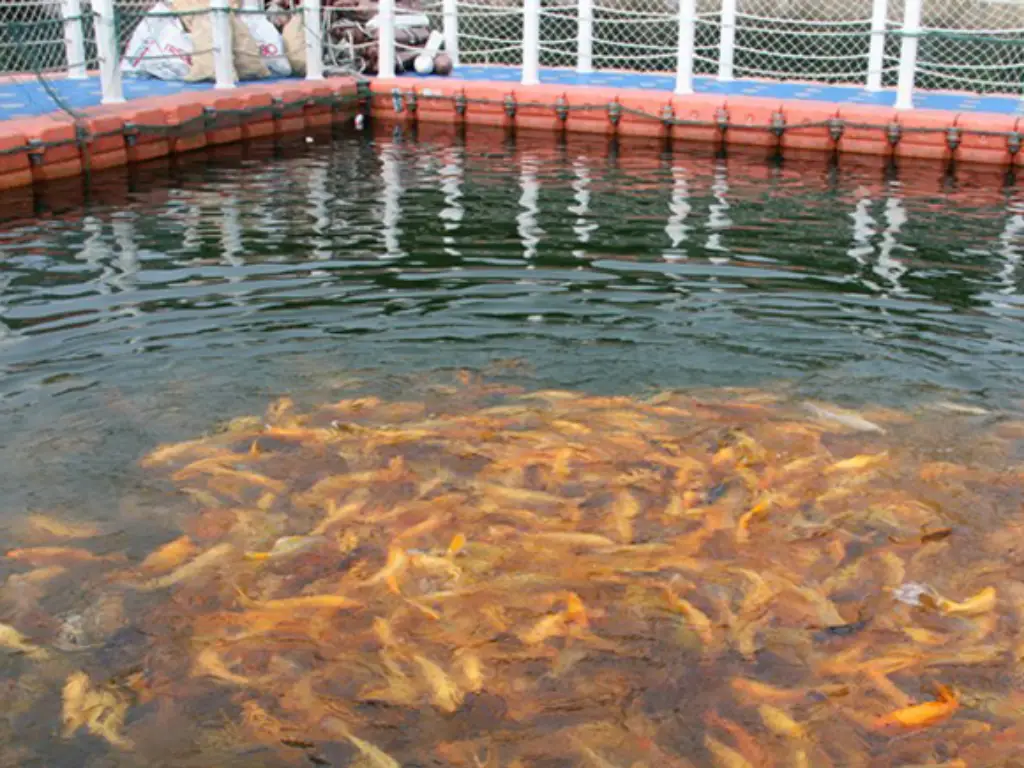
Adhering to the local, state, and federal regulations is not a bargaining point when trying to set up an aquaculture business. A failure to obtain the necessary permits may lead to huge fines and may cause the forceful shutdown of your operation. This can be a tricky regulatory environment, so start early on this.
The most common permits and licenses that are needed might be:
- Aquaculture Permit/License: Issued by your state’s Department of Agriculture or Department of Fish and Wildlife. This is the first license to operate.
- Business License: A standard license required for any business operating in your city or county.
- Water Rights/Use Permit: Should you be utilizing water in a lake, river, or groundwater, you will more than likely need a permit from your state’s water resources board.
- Wastewater Discharge Permit (NPDES): You will require a National Pollutant Discharge Elimination System (NPDES) permit that is under the supervision of the Environmental Protection Agency (EPA) and maintained by state agencies, in case your facility discharges water into a public waterway.
- Zoning Permits: You need to make sure that your land is zoned as either agricultural or aquacultural land.
First, call the Department of Agriculture in your state. They are generally the main source of information to an aspiring aquaculturist and can give a checklist of the permits required and the agencies to consult. The best way to ensure an easy approval process is to collaborate with the regulators as early as possible in a transparent manner.
Designing Your Fish Farming System
One of the most crucial decisions in your fish farming business plan is the selection of a farming method. The choice of system will dictate your start-up cost, the method of operation, fresh water management requirements, and even the type of fish you can rear. Although these can vary considerably, the three most common techniques are Recirculating Aquaculture Systems (RAS), pond culture, and cage culture within natural water bodies.
The table below compares these systems based on major decision criteria: cost, space requirement, water, and yield, and technical requirements:
| Factor | Traditional Ponds | Recirculating Aquaculture Systems (RAS) | Cage Culture Systems |
| Coste inicial | Lower initial investment in construction. | Very high initial investment in tanks, filtration, and monitoring equipment. | Moderate; requires investment in cages, anchors, and floating platforms. |
| Land & Space | High requirement; needs significant acreage with suitable soil and water access. | Low requirement; small footprint allows for placement near urban markets. | Minimal land needed; primarily utilizes existing water bodies (lakes, coastal areas). |
| Water Usage | High; relies on regular water exchange to maintain quality. | Extremely low; it reuses over 90% of its water daily. | None; relies on the natural flow and volume of the host water body. |
| Production Density | Lower; produces fewer pounds of fish per unit of volume/area. | Very high; enables large, concentrated harvests from a small space. | High allows for concentrated production within a defined, floating space. |
| Technical Skill | Lower technical barrier, but requires a deep understanding of pond ecology. | High technical barrier; requires skilled management of complex life-support systems. | Moderate; requires knowledge of site selection, anchoring, and biofouling management. |
| Management Style | More reactive, responding to changes in the pond environment. | Proactive and data-driven; continuously managing a controlled environment. | Environment-dependent; managing stock within a larger, natural ecosystem. |
Specifically, cage culture may prove very appealing to businesspeople who have the right location. The engineering and materials of cages and walkways are important to the long-term performance. New HDPE systems are superior to wood or metal and are corrosion, impact, and UV resistant, which saves on maintenance costs and prolongs service life. They are also modular, so you can begin with a small operation and expand the fish farming as the demand increases, reducing investment risk and maintaining expansion potential.
HiSeaDock: Reliable Floating Solutions for Aquaculture and Beyond
In farms that have embraced cage culture, the floating structure is not only a support system but the mainstay of their daily activities. HiSeaDock is a 10+ year old company with clients in 80+ countries, specializing in high-density polyethylene (HDPE) plastic floating dock systems, which are enhanced with UV stabilizers. This makes it highly durable, safe, and able to perform even under extreme marine conditions.
Their modular platforms are perfect for fish cage installation, floating working platforms, and access walkways, where the farmer can begin with a manageable system and can easily expand as production increases. HiSeaDock solutions are affordable and long-term aquaculture operations because of quick installation, low maintenance, and a 5-year warranty.
On top of aquaculture, HiSeaDock can be used by marinas, resorts, water sports facilities, and waterfront projects – a flexible option that can be used by anybody who requires long-lasting, configurable water platforms. HiSeaDock can support your fish farming business to grow steadily, water upwards, by integrating good quality materials with competitive prices and international delivery. Find out more at www.hiseadock.com.

Selecting Your Most Profitable Fish Species
The selection of the fish species is the most important decision in the fish farming business plan of many entrepreneurs. It has a direct effect on profitability, operational needs, and sustainability. The optimum species must be able to meet the demand of the market, suit the local environmental factors, and it must be able to produce good growth with reasonable production cost.
To give you a basis to compare, the table below summarizes some of the most important factors of some of the most popular fish in aquaculture:
| Species | Growth Cycle (to market size) | Avg. FCR | Market Price | Disease Resistance | System Suitability |
| Tilapia | 6-9 months | 1.4 – 1.8 | Moderado | Alta | Ponds, RAS, Cages |
| Catfish (Channel) | 12-18 months | 1.5 – 2.0 | Moderado | Alta | Ponds, RAS |
| Trucha arco iris | 9-12 months | 1.1 – 1.5 | Alta | Moderado | Raceways, RAS, Cages |
| Atlantic Salmon | 24-36 months | 1.2 – 1.5 | Muy alta | Bajo a moderado | RAS (smolt), Cages |
| Barramundi | 10-14 months | 1.3 – 1.8 | Alta | Moderado | RAS, Ponds, Cages |
| Largemouth Bass | 18-24 months | 1.8 – 2.5 | Alta | Alta | Ponds, RAS |
| Yellow Perch | 12-16 months | 1.5 – 2.2 | Muy alta | Moderado | RAS, Ponds |
Note: These are approximates and may differ with genetics, feed quality and management. Tilapia and Catfish are commonly suggested to the novice fishers because they are tough. The Trout and Salmon demand higher prices, colder, high quality water and more intensive management.
Mastering Water Quality Management
The essence of any aquaculture is water. Maintaining the ideal parameters of water quality is the most crucial determinant of the success or failure of your farm. Poor water quality makes fish stressed, slower, more susceptible to diseases, and it may cause disastrous stock loss. These are the main parameters that you need to watch and control:
- Dissolved Oxygen (DO): The most important parameter. Fish breathe with the help of oxygen. The most prevalent cause of death is the low levels of DO. Most species of warmwater should be maintained at above 5 mg/L.
- pH: A scale of acidity or alkalinity. The majority of the species grow best at 6.5 to 8.5 pH. Sudden changes in pH are very stressful.
- Ammonia (NH₃): A waste product excreted by fish. It is highly toxic, especially in its un-ionized form (which increases with higher pH and temperature). It should be kept as close to zero as possible.
- Nitrite (NO₂): The intermediate product in the nitrogen cycle as bacteria convert ammonia. It is also toxic as it impairs the blood’s ability to carry oxygen. It should also be kept near zero.
- Temperature: There is an optimum temperature range for growth in each species. Working beyond this scope decreases the feeding efficiency and causes stress.
Get good water testing equipment. A handheld digital meter of DO, pH, and temperature is required in the case of pond systems. In the case of RAS, advanced inline sensors and controllers are advised. Testing, at least once a day, is also required.
Optimizing Feed for Growth and Profit
The greatest variable cost in the majority of aquaculture operations is feed, and this usually comprises 40-60 percent of total operating costs. Thus, the feeding strategy is an essential factor of profitability.
The species of fish, life stage, and production objectives determine the selection of feed. Commercial feeds formulated to satisfy certain nutritional needs should be of high quality to ensure that there is efficient growth and the health of the fish is maintained. As a case in point, the protein content of carnivorous species such as salmon will need to be higher, whereas the omnivorous ones, such as tilapia, can make use of a broader diet.
The changes in feeding rates ought to be based on the biomass, water temperature, and fish behavior. The practice of overfeeding wastes the feed, and this reduces the quality of water and thus making disease management expensive. In large-scale operations, accuracy may be enhanced by automated feeders and real-time monitoring systems, and labor needs may be minimized.
Investigating other protein sources, e.g., insect meal or plant-based proteins, may lower feed costs and increase sustainability. Nevertheless, any substitution of feeds has to be tested in order to ascertain that it does not undermine the growth rate and quality of the products.
The fish farming business plan should include a plan of feed management, source, storage, feeding program, and cost control. Good feed optimization will enhance growth performance, minimize waste, and increase profitability, which means that production is competitive in the market of fresh fish and value-added fish products.

Preventing and Managing Fish Diseases
One of the most important elements of the fish farming business is disease control. Stock can be wiped out in an outbreak, which will ruin your reputation and can be very costly financially. An effective disease management strategy ought to be preventive in the first place, with explicit monitoring and treatment protocols.
- Prevention: The First Line of Defense
The best form of disease management is to prevent its entry into your farm. Obtain fingerlings only through certified disease-free hatcheries, quarantine all new stock, and use high standards of hygiene. To minimize stress and immune suppression, maintain clean water, control algae growth, maintain sufficient oxygen, and keep stocking densities at recommended levels for your fish type.
- Monitoring: Early Detection Saves Stock
It is essential to monitor regularly. Be on the lookout for feeding habits, swimming habits, or appearance. Test the most important parameters of the water frequently, including temperature, pH, ammonia, and nitrites, as poor water quality usually precedes an outbreak. In case of problems, establish the reason by using laboratory tests before acting.
- Treatment: Targeted and Responsible
Treatments should be applied to confirmed diagnoses. Medicated feed can be used, and water treatments or vaccination programs of selected high-value fish species are also possible. Reduce the use of antibiotics to avoid the problem of resistance and to abide by the export requirements. Food safety should always be practiced by following the right dosage and withdrawal times.
A robust and properly documented disease management strategy not only minimizes mortality but also maximizes feed conversion ratios (FCR), harvest yields, and ensures that animal health standards are met. This will safeguard the financial viability of the fish farm and promote sustainability.
Finding and Winning Your Target Market
In a fish farming enterprise, it is more important to know who and how to sell rather than just increasing the number of fish. The most appropriate sales channels will depend on your species, the amount of production, and positioning.
- Local Restaurants & Hotels: Best when you have high-end or specialty species such as salmon or trout; they want a consistent supply and freshness.
- Farmers’ Markets / Community Sales: Suitable for small-scale farms; profit margin is higher, and the relationship with the customer is direct.
- Wholesalers & Distributors: Ideal when dealing with a large-volume farm; not as high a margin, but a constant demand.
- Direct-to-Consumer (DTC): selling fresh fish or processed fish products online or through pick-up points; best suited to those farms with good branding or unusual types of fish.
In selecting a channel, you have to consider the scale of your production, the species, price positioning, and the delivery capacity. Small-scale farms need to concentrate on high-margin local sales, medium-scale farms can add restaurants and wholesale, and large-scale farms need to target the wholesalers, institutional buyers, or exports.
Pricing Your Fish for Maximum Profit
Selling your product at the right price is a key element to financial viability. Pricing at a level that does not leave the money on the table may scare off buyers. You must have a clear idea of your costs and the market to base your pricing strategy on.
Cost-based pricing begins by computing the total cost of production based on feed, labor, energy, maintenance, and depreciation of infrastructure. Then a reasonable profit margin is added so as to arrive at the minimum selling price. Instead, market-based pricing takes into account what other similar products are going for in your region and makes adjustments in regards to quality and brand positioning.
Value-based pricing model can be used on premium products like high-grade salmon or organically farmed tilapia. This strategy focuses on the novel selling points, which can be the sustainability certification, high freshness, or origins in natural water bodies.
Pricing can also be affected by seasonal activities. During holidays or special events, the demand can be high of fresh fish and price adjustments can be made temporarily. On the other hand, when there is an oversupply, strategic promotions come in handy to sustain the level of sales.
The business plan of fish farming must specify the pricing strategy adopted, the desired profitability levels, and how it will be adjusted to market changes. Frequently checking the prices and cost of production of your competitors will make your pricing strategy viable and successful.
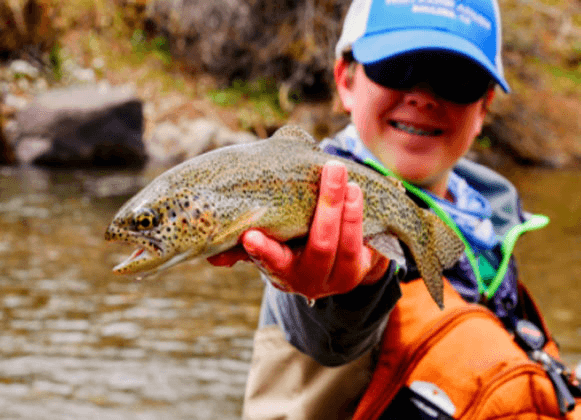
Scaling Your Business Sustainably
As soon as the fish farming business is going and earning a steady income, then the next thing is to look at expansion. The scaling has to be considered strategically so that the resources are not overstretched and quality is not compromised. The sustainable expansion strategy guarantees the profitability of the company in the long term with the reduction of the risks related to the environment and operations.
Scaling has a few alternatives. Output can be increased by expanding the production capacity in the current farming approach, including additional fish tanks in an RAS facility or growing the pond size to support small-scale fish farming. Alternatively, market reach can be increased by diversification into new species of fish or value-added fish products. As an example, tilapia farming can be integrated with catfish farming in order to minimize market reliance on a single fish and enhance resilience.
Before the expansion, determine the infrastructure preparedness, availability of water sources, and the environmental conditions that may be affected. To ensure that the fish remains healthy during scale-up, it is necessary to maintain clean water and optimum stocking densities. When there is no adequate support system, an increase in production may result in outbreaks of diseases, a slower growth rate, and an increased cost of operations.
Environmental stewardship is part of sustainability. The use of waste management systems, algae growth monitoring, and wild fish population protection conforms to industry best practices and can be required as part of a regulatory requirement. In certain markets, sustainable aquaculture certification can provide access to high-value markets.
A phased growth model with measurable objectives, capital needs, and risk reduction measures should be provided in your fish farming business plan. This systematic plan assists in a manageable and profitable growth without sacrificing the quality of the products and the reputation of the business.
Conclusión
A fish farming business is a serious venture that requires money, scientific skill, and business stamina. The opportunities are real and increasing as the basic food consumption in the world is changing. Nonetheless, such opportunities can only be available to individuals who pursue the venture with a hardworking work and a promise to excel in its operations.
This blueprint has offered a detailed outline, and it has taken you through the starting crucial question of personal suitability to the finer details of planning, finance, operations, and marketing. The journey is not easy; however, with the right preparation, the potential to establish a viable and profitable business that can help contribute to the local food system is enormous for the well-prepared entrepreneur. And now the next thing is to take this blueprint and to go to work at it with a will to make it your successful reality.


